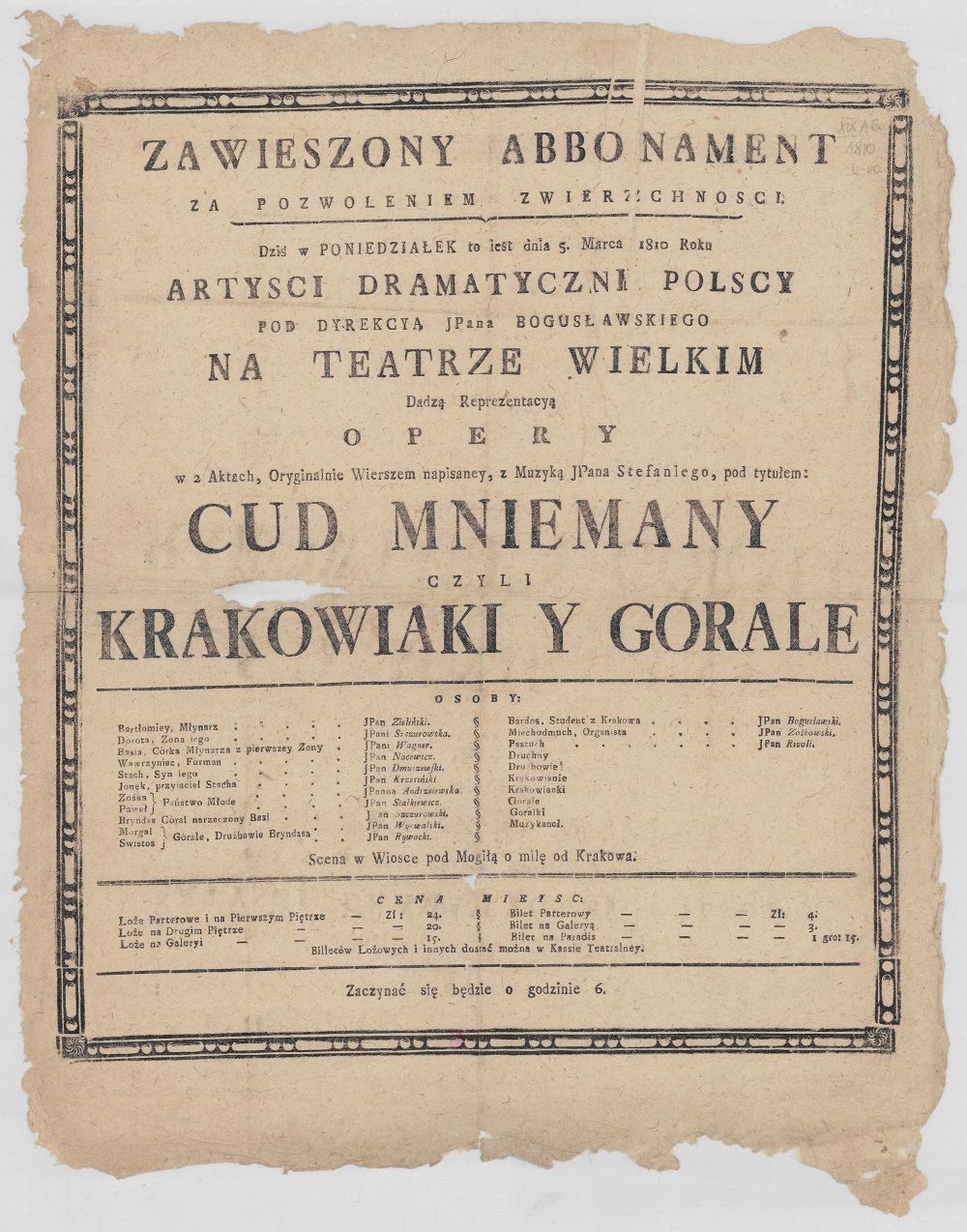The opera – a new musical genre of the Baroque – was brought to Poland on the initiative of Władysław (Ladislaus) Vasa, the king’s son, as early as 1628. The court of King Zygmunt (Sigismund) the Third saw the performance of a “fishermen’s idyll”,
Galatea, by unknown authors. Władysław IV Vasa’s royal theatre was inaugurated in 1635 with
Giuditta, performed to celebrate a peace treaty with the Muscovite state. None of the operas from this period has been preserved, but more than a dozen are known too have been played before the king’s death in 1648. The librettist was, in most cases, the king’s secretary Virgilio Puccitelli, and the music was written by members of the royal ensemble – one of whom was the famous Italian composer Marco Scacchi. Vocal parts were sung by excellent Italian singers. After Florence, Rome, Mantua and Bolonia, Warsaw was the fifth city in Europe to cultivate this new musical art.
After the death of Władysław IV Vasa, great patron of the theatre, Poland’s operatic life was on the wane until king August III of Saxony brought the splendour of this art back to Warsaw. It was at his court that Johann Adolf Hasse, one of Europe’s most appreciated composers of that day, wrote his music in 1730-63. Hasse’s operas were staged by opera houses from Palermo to Petersburg and from Lisbon to Moscow. Specially for the Warsaw theatre, Hasse wrote the opera Zenobia to a text by the greatest librettist of all time, Pietro Metastasio.
Stanisław August Poniatowski, the last king of independent Poland, also supported the opera. During his reign a whole network of theatres was set up in Warsaw, and from 1778 they presented, alongside Italian operas, also works by Polish composers. The earliest one was the Singspiel
Nędza uszczęśliwiona [
Misery Made Happy] with a libretto by Wojciech Bogusławski and music by Maciej Kamieński, followed by the first Polish full-length opera
Cud mniemany czyli Krakowiacy i Górale [
An Apparent Miracle, or the Cracowians and the Highlanders] by Bogusławski and Jan Stefani. From that time on, Warsaw’s National Theatre, followed by other theatres throughout Poland, staged more and more Polish operas. In 1840, the Polish opera repertoire consisted of more than 220 titles!
It was only Stanisław Moniuszko, however, who raised the Polish opera to the highest artistic level. Halka of 1848, staged in a new version in 1858, as well as
Straszny dwór [
The Haunted Mansion] of 1865 are his two most significant works, combining high standard European composition technique with a national content.
Dr Mieczysław Kominek
Read more:
Polish composers before Chopin and his contemporaries
The previous article:
The Baroque in Polish music


